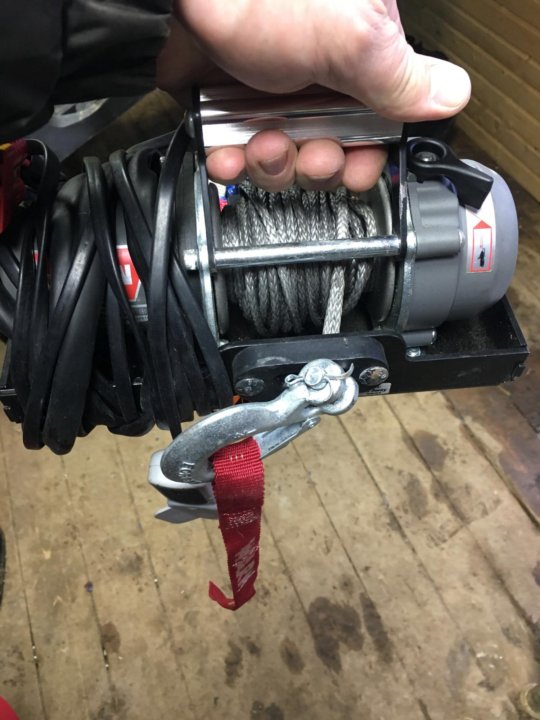ATV winches are capable of so much more than just getting you out of the mud. Here are 29 cool ways you can use one of the favorite ATV accessories.
With enough speed, there is almost no limit to how steep an ATV can actually climb. But with increasing slope comes an increased risk of slipping or even rolling over.
By using your winch as an anchor, you can remain in control of the bike in places where you otherwise could not ride without a significant risk of tipping.
Forestry machines use the same technique for harvesting wood in areas that are otherwise hard to reach. But their winches are a lot stronger. You need to remember there are limitations to how much your ATV winch can cope with.
You need to attach the winch to a solid object on top of the hill you want to go either up or down. By the root of a big healthy tree will likely be your best option in most cases. Remember to help all ATV riders maintain a good reputation; always use a tree saver.
Depending on whether your winch is located in the front or the back of your bike, you may need to go in reverse as you make your climb or descent. The winch must always be facing straight up the hill, and the bike should not be leaning to either side.
Maintain even tension on the winch line as you attack the hill in a slow and controlled manner.
It’s a good idea to practice this tip on hills that are not so steep. This way, you are well prepared for the more tricky situations that may come later.
Bridge building is fun. If you are fortunate enough to own some land, it could be a cool little weekend project to do with friends or family.
There may even be times where you have to build one to make it safely to the other side of a small creek.
You can make a relatively sturdy bridge simply by using some beefy logs. Tie them together to prevent them from separating when you drive over the bridge.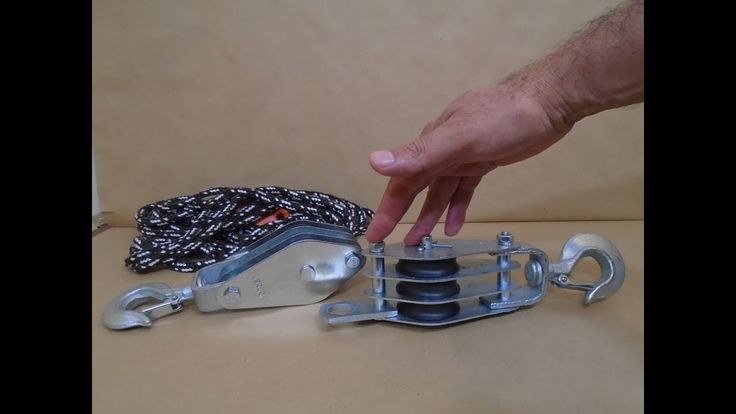
But dragging the logs across the creek can be quite exhausting, if not impossible, when done by hand. Using the ATV winch, you will have no problems dragging the logs from where you cut them and across the gap.
When installing a snowplow on an ATV, it’s common to use the winch to raise and lower the plow blade. You simply attach the winch cable to the plow frame.
This particular model features a hydraulic tilting system but still uses the winch to raise and lower the plow.While it is possible to lift the plow blade manually, it will soon become tiresome.
But if you already have a winch on your bike, you are in luck. This gives you a smooth, fully automatic operation of the plow without any added cost.
It’s a great way of getting the most out of the gear you may already have.
When it comes to retrieving big game, life before and after ATVs is like night and day. After a successful but exhausting day of hunting, it’s always super nice not having to pull the prey by hand.
If you hunt on flat grounds, you can usually ride the ATV all the way to where the animal fell. But when hunting in woods full of little creeks, cliffs, and other challenging terrains, access is not always easy.
And for some reason, the animal always tends to find the least accessible spots to rest. This is where the ATV winch really comes in handy.
The winch line is usually about 45 feet and can easily manage most big game types. Often, a couple of good pulls with the winch are all that it takes to get the prey to a much better position for further transport.
Whenever butchering big game, it’s always ideal for hanging the animal. If you are a long way from home, you may need to do this job out in the woods.
Out there, your options for hanging usually limit to a branch on a big tree, or you can build an A-frame construction. But to get the animal up there by hand can be quite a challenge.
If you have your ATV with you, Chances are you also have a snatch block in your recovery kit.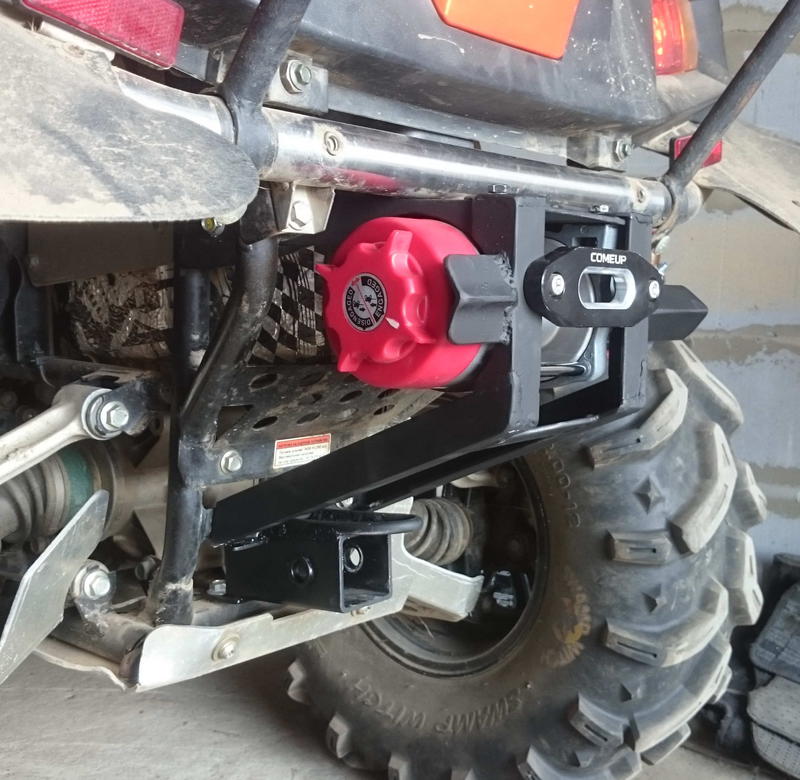 This handy little tool is not only useful in rescue operations. It also works great for hoisting a deer.
This handy little tool is not only useful in rescue operations. It also works great for hoisting a deer.
In the next tip, we stay on the subject of hunting. This may sound a bit brutal for those that are not into hunting or processing dead animals. But this way of skinning is actually not that uncommon.
First, the butcher will start removing the skin at one end of the animal. Usually at its head.
The animal is then hung by its front legs on a gambrel hook connected to a winch mounted to the ceiling. Then they attach the free part of the skin to a hook bolted to the floor.
When the butcher operates the winch, the skin gets pulled off the animal mechanically. This method saves a lot of time compared to doing it with a knife, the traditional way.
You can achieve the same with your ATV winch. Hang the animal neck up from a big tree or some other solid anchoring point. Use a gambrel hook for the best result.
If you do this in your garage, make sure your roof construction is strong enough!
The idea is quite simple. Park the ATV underneath a branch of a large tree. Drag the winch line up and over the branch, and connect it to another tree or solid object further away.
By adding a cable trolley, you’ve made yourself a cool zip line. You can even use your snatch block as a trolley.
While this fun little project, in theory, can be done quite safely, there is a lot that can go really wrong. That’s why I cannot recommend that anyone try this. No, really, it’s dangerous. Don’t do it!
Taking down a tree that’s close to a building can be quite a nerve-wracking experience. Even the professionals do not take these kinds of jobs lightly.
A tree leaning slightly against the building adds extra complexity to the job. The ATV winch can help you steer the tree-felling in the direction you want.
It’s worth noting that this tip is absolutely not for those that bought their first chainsaw and is about to cut down their first tree. You should be an experienced tree-feller before you even consider attempting a job like this.
But if you are a somewhat experienced tree-cutter, this trick may be a nice addition to your toolbox.
The principle is quite simple. This way, you can use the winch to pull the tree in the desired direction while you do the cut.
Again, do not try this if you are inexperienced in taking down trees. There is a lot that can go wrong, and the consequences can be fatal.
Here are some tips that should improve your odds a little:
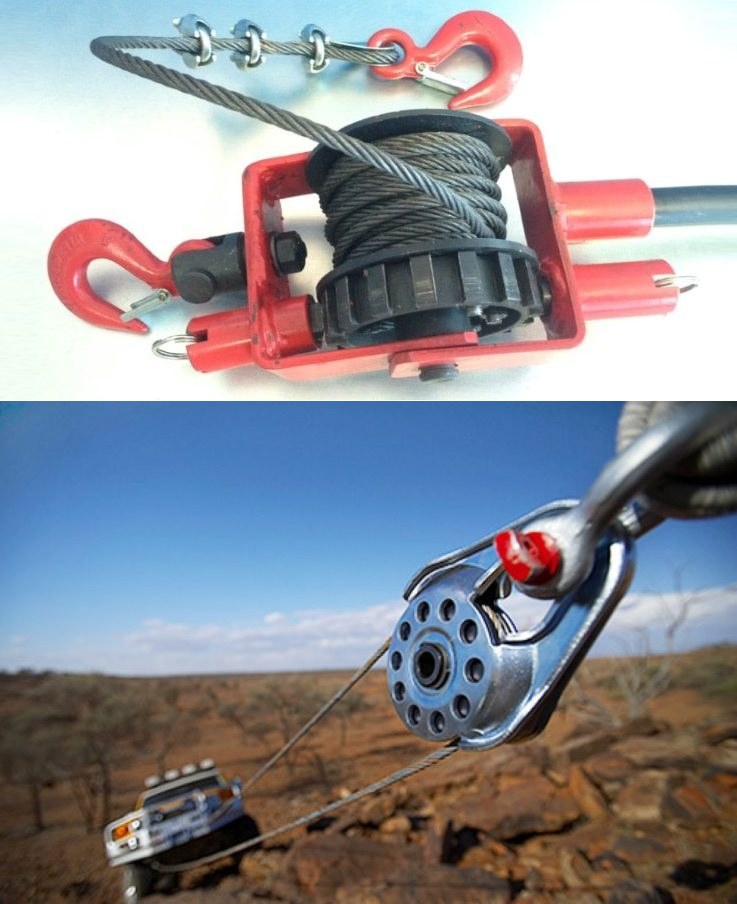 ”
”Many ATV trailers come with beds that are hinged to the rear for easier unloading. But in most cases, you have to pay extra to get a proper lifting mechanism.
You may get one of those flimsy hand-crank style winches that are both slow and dangerous to operate. Those are worth upgrading.
Those are worth upgrading.
By swapping to an electric ATV winch, you get to unload the gravel or whatever you are hauling with the push of a button.
This affordable upgrade increases the effectiveness of the operation by tenfold. It makes for a great cost/benefit ratio.
The low speed and high power you get from an ATV winch are great for any job where a controlled straight pull is required.
This tip may not be for the more delicate bodywork jobs where the result needs to be perfect. But it should work just fine to straighten a bent fender on an already beat up off-road truck.
It’s also good for straightening some mashed farming equipment.
You want to have adequate pulling power available and the control to stop the pull at just the right spot. An ATV winch may be just the tool you need.
Drill a hole or spot weld a hook as an anchoring point, and you should be good to go. Don’t forget to film it and post it on youtube!
 Retrieve a flooded boat
Retrieve a flooded boatIf your boat gets flooded by heavy rainfall, or if it sinks by the dock during a storm, you may use your ATV winch to retrieve it.
Just take your time to let the water out gradually. This will lessen the risk of damaging the boat or overheating the winch.
It’s not only flooded boats that can be dragged onshore using an ATV winch. These kinds of winches are actually used for this exact purpose when fitted inside a boathouse.
With the ATV winch, you have a mobile solution to drag your boat on shore anywhere you want.
Flagpoles are often hinged at the bottom so they can be laid down in a controlled manner. This makes initial installation and later the occasional maintenance a lot easier.
But the job of raising or lowering the pole can be quite heavy.
Use an A-frame or position your ATV on higher ground so that it pulls the pole upwards.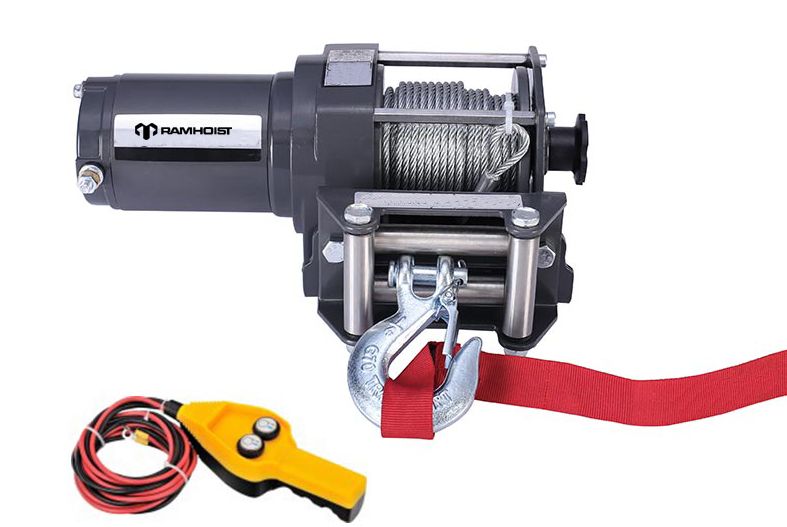
The same principle applies to raise structural members in small construction projects. Just remember that ATV winches are not really meant for overhead lifting.
Fence posts that have been sitting for some time can be a nightmare to remove. You’ll often need some sort of heavy machinery or to do some smart thinking to succeed.
The ATV winch can pull not only horizontally. It pulls with just the same strength upwards. The key is positioning.
Drive your ATV all the way up against the stubborn post you can’t get out. You only have the distance from the winch down to the ground available, but this is often enough.
Attach a chain as tight as you can around the as close to the ground as possible. This increases grip and saves your winch cable.
You may need to re-position the cable and do a couple of pulls. But in a matter of minutes, the stubborn post should be out off the ground.
There’s a good chance that your ATV is already a part of your fencing rig. With the winch already there, you might as well make the most out of it and use it for tension.
With the winch already there, you might as well make the most out of it and use it for tension.
It can be used to stretch any kind of fence line or fencing as much as you need to. Add a wireless remote, and it’s like having one extra helper there with you.
ATV winches make a great tool for collecting firewood. They allow you to move quite heavy logs up steep hills and over wet grounds where the ATV itself cannot reach.
As soon as the logs are winched to more driveable grounds, they can be hooked up to the ATV or loaded into a trailer for further transport.
If you already own an ATV trailer with a hand-cranked crane, consider upgrading to an electric ATV winch with a remote. This gives you a really flexible system that makes loading the firewood onto the trailer a lot easier.
ATV winches do tend to drain the battery faster than the ATVs charging system can keep up with. If you have problems with your ATV battery draining, either from winching or other reasons, this article will be of good help.
To increase battery life when you’re out collecting firewood, it’s a good idea to fit an extra battery. Use a big car battery that you fit on the trailer. Top it off every time you park the ATV.
In combination with the charge, it gets from the ATV, a fully charged battery should be enough to get you through a day.
You won’t always be able to go around fallen trees that block the trail. I’ve lost count of how many times the ATV winch has come to the rescue in situations like this.
Combined with a quality foldable saw, you are equipped to tackle most tree-blocking situations. The winch should be able to move even large trees with ease if it’s well-positioned.
When fall arrives, it’s not only boats that need to go out of the water. If you have stuff like a boat hoist, a raft, or a floating dock, these need to come onshore.
Once again, the ATV winch is a good tool for the job.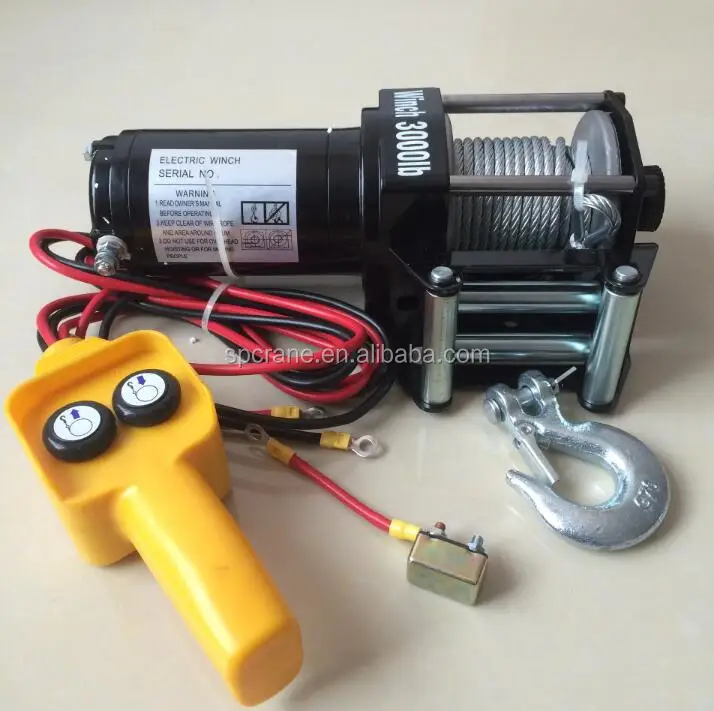 Place some straight logs to make a good sliding ramp.
Place some straight logs to make a good sliding ramp.
The main benefit of winching rather than pulling with your ATV is that you have so much control over the whole operation. You can stop in an instance, and the speed is slow and controllable.
Winching may be a good alternative for tearing small wooden buildings like treehouses, sheds, garages, and even small cabins.
If it’s speed and effectiveness you are looking for; you will probably be better off by renting a good size excavator. But if time is not a big issue, and you already own an ATV with a winch, it’s worth giving it a try.
Especially when access is limited, the ATV winch may be your best bet. Together with a chainsaw and some chain or wire, you should have all the tools you need to get the job done.
I won’t go into the safety aspects of demolition. But winching will usually be a lot safer than other alternatives, such as pushing with a front loader or going at it with a sledgehammer.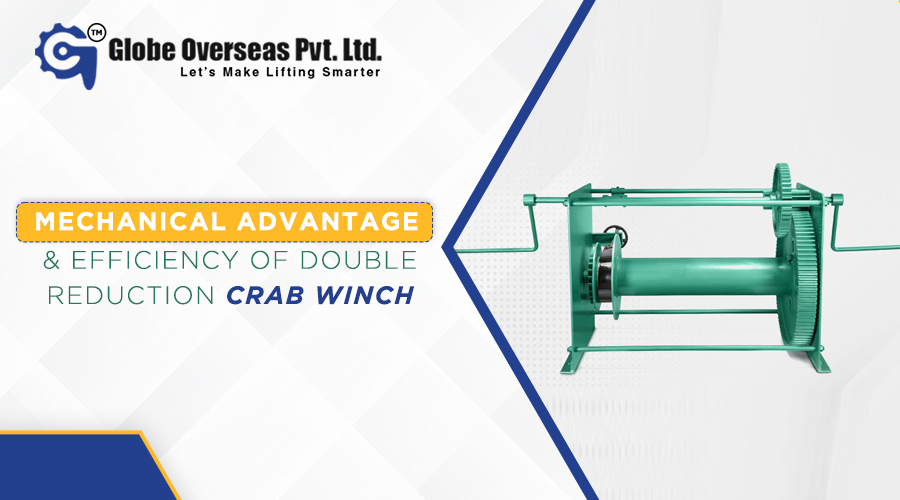
You should always hook up an extension cable so that you can winch safely from a distance.
I recommend getting a spare synthetic winch line. These are quite cheap, and when the demolition job is done, you have a great addition to your onboard tool kit.
By having a spare line available, you can extend your winching range when the situation calls for it. The added range of application this gives you is only limited by your own imagination. Safe demolition is only one out of endless possibilities.
Do not connect the actual winch rope or winch cable directly to the building. It is likely to get pinched and snap or to get damaged from falling demolition debris.
Instead, you should get a few feet of chain or a beefy steel cable. Use this to connect the winch cable to the actual building.
Let’s say you were so unlucky that your ATV belt broke from ripping it too hard in the waist-deep snow. Then the winch will be of great help for pulling the bike onto a flatbed trailer
Winching a damaged ATV sure beats pushing it!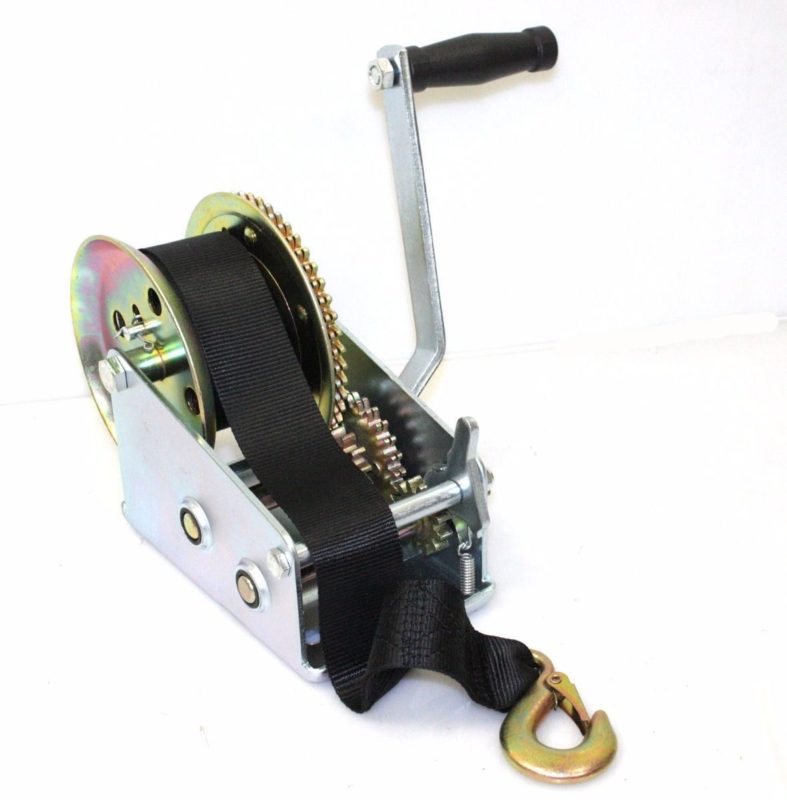 Rescue a truck that has gone off the road
Rescue a truck that has gone off the roadYou’ll be surprised how strong an ATV winch actually is. One time I had to rescue a long-bed Ford F-250 pickup truck that had went off a snowy road. I parked the ATV in the ditch on the opposite side of the road for optimal grip.
I must admit I was a bit skeptical, and the 3500lbs Polaris winch was pushing its limits. Buy the rescue was successful, the winch did its job.
Spare tire winches are commonly used to attach spare tires onto RVs and camping trailers. You can utilize the same principle to attach a spare tire to your ATV rig. All you need is a winch and a stick.
Simply pull the winch hook through the center of the wheel and attach it to a stick or metal rod. Then use the winch to tighten until the tire rests snug on your brush guard.
This trick may not work on all ATV’s, depending on where the winch is located. There is also a small risk of damaging the internals of the winch over time.
But it can be done, and it won’t add any weight to your rig other than the tire itself.
I prefer bringing a simple tire repair kit instead. These kits are cheap and allow you to repair a puncture out in the field. It cannot be considered a permanent fix, but it is usually enough to finish the ride and bring you safely back home.
A power loader is basically a hinged steel or aluminum loading frame that attaches to the front of the ATV.
It utilizes the winch’s power to load some heavy big game, hay bales, firewood, tool-boxes, ice-chests, sacks of feed, building materials, fence posts, and many other heavy objects onto the ATV.
It’s a great back-saver and allows older riders or those with physical limitations to perform tasks they otherwise would not be capable of.
When out ATV camping or on trail rides that stretch over several days, there may arise a need to dry some clothes or wet riding gear.
Stretch the winch line between two trees, and you’ll get a nice and strong ridgeline. Throw a tarp on top, and you have yourself a nice emergency shelter.
Sometimes you may have to make emergency repairs out in the woods. Hitting a stump or rock may bend your A-arm, rendering the bike impossible to continue riding.
If your riding buddy has a winch, you may be able to straighten the bent part enough to continue the ride. It will not be a permanent fix, but that’s not really the goal.
If a riding buddy is unlucky and flips his bike, or if your trailer hits a rock and tips over, the winch has the power you need to get it back on its wheels.
Use the winch to move rocks or other heavy objects around. You may also be able to pull stumps from small trees and bushes.
Tip for increasing your chance of success when pulling the roots of a bush: Soak the area around the root ball with plenty of water in advance.
With a rear-mounted winch or by mounting it on the trailer itself, it can be used to skid heavy loads onto a trailer.
Many of the tips in this post involve using the winch in ways not recommended by the manufacturers.
For instance, vehicle winches are not meant for overhead lifting, only horizontal pulling. That is not to say that the winch will not be capable of lifting. But it lacks the safety features a hoist has that makes it much better suited for overhead lifting.
Please understand that winches can be dangerous if misused. Apply any of the stuff you read here completely at your own risk.
Make careful preparations and only use proper winching equipment. It’s not worth taking any chances if you don’t feel comfortable with the task on hand.
Start with easy winching jobs. Then increase complexity gradually with a lot of practice.
At Start My Car, we keep a small range of All Terrain Vehicle (ATV) winches.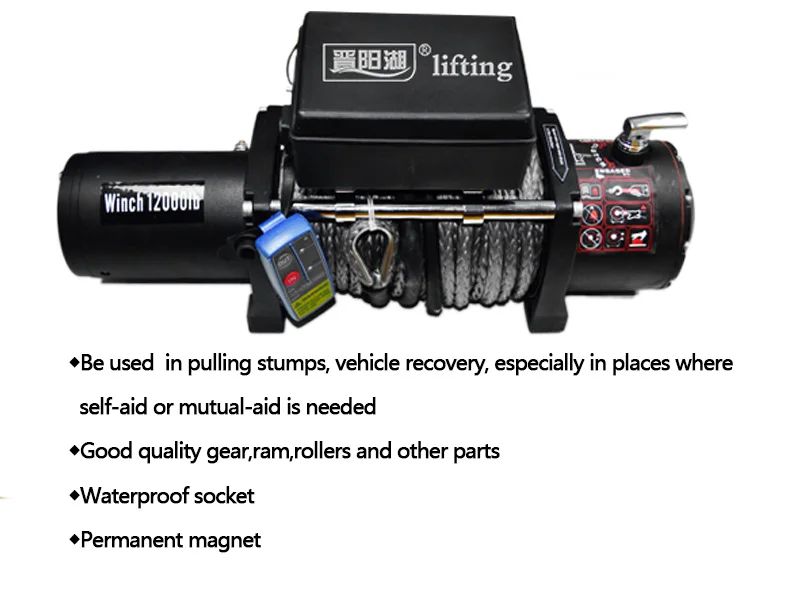 This week, a customer who had fitted one such winch, reached out to ask for tips and pointers of how to use the winch. To be honest, I have had precious little first hand experience in using a winch for off-road recovery. The majority of winch action I have seen was the numerous times my Dodge was hauled up onto a flatbed tow truck.
This week, a customer who had fitted one such winch, reached out to ask for tips and pointers of how to use the winch. To be honest, I have had precious little first hand experience in using a winch for off-road recovery. The majority of winch action I have seen was the numerous times my Dodge was hauled up onto a flatbed tow truck.
So, I did what most people would do in circumstances – I googled it for him! I found some impressive looking Youtube videos on the subject, from experienced 4x4’ers with thousands of likes and subscribes and passed those links on to the customer.
I also found some great articles on the subject which explain the do’s and don’ts of safe winching (is that even a word?). One of which I have decided to include below. It is from the Arrive Alive website, with expert advice provided by Andre Botha of Just 4x4 Adventures.
_______________
Every winching situation has the potential for personal injury. In order to minimize that risk, it is important that you read this Basic Guide carefully, familiarize yourself with the operation of your winch before having to use it, and be constantly safety oriented. In this Guide, we will set forth many of the basic rules of safe winch operation. However, because every winching situation is different, your constant good judgment and consistent focus on safety are of great importance.
In this Guide, we will set forth many of the basic rules of safe winch operation. However, because every winching situation is different, your constant good judgment and consistent focus on safety are of great importance.
Practice using your winch before you get stuck. A real situation is no time to Single line pull be learning how to use your winch.
Make sure new wire rope is stretched before it is first used. Unspool the full length of the wire rope, leaving 5 wraps on the drum. Apply at least 500 pounds of tension. You can do this by setting up an anchor point and pulling your vehicle to it on a slightly inclined, flat surface and letting the vehicle roll.
Whether you’re recovering another vehicle or pulling a stump from the ground, knowing the proper winching techniques can help keep you and others around you safe. And perhaps the most important part of the winching process, regardless of the situation, is what you do before you pull.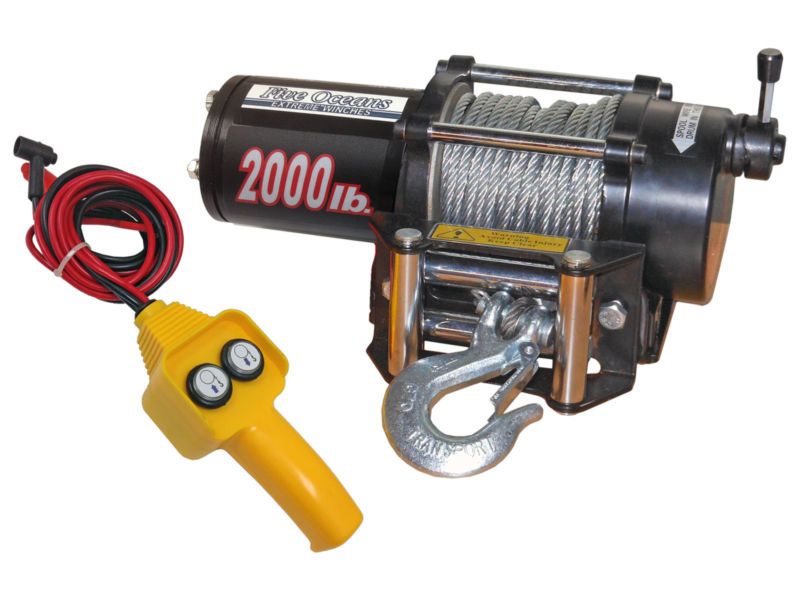
In this section, we’ll show you the basic fundamentals for effective winching. However, it is up to you to analyze the situation and make the decisions necessary for the proper use of your winch. Apply your knowledge of your winch and the basic fundamentals you’ve practiced and adjust your techniques to your unique situation. Some keys to remember when using your Warn winch:
Pulling
As you probably have already noticed, there are many things to do and consider before you actually begin pulling.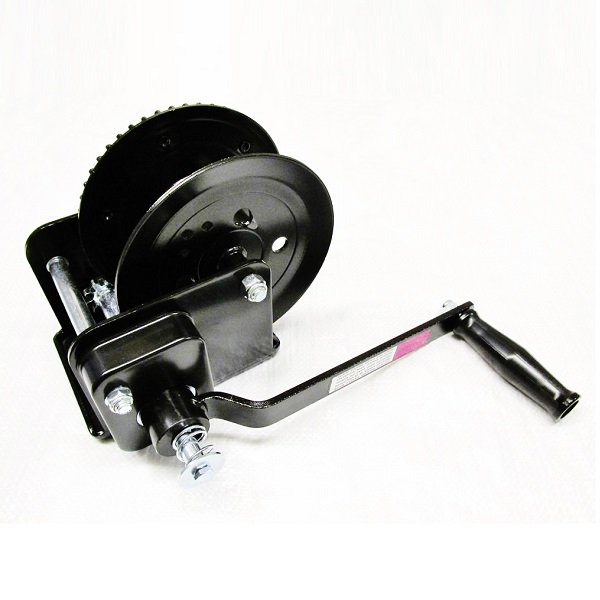 Think through what you’re doing and you can keep yourself and those around you out of harm’s way.
Think through what you’re doing and you can keep yourself and those around you out of harm’s way.
Operating your winch properly is so important, in fact, you should practice these techniques before having to face the distractions and stresses of a real winching situation
Check Wire Rope.
The wire rope should be neatly wound around the spooling drum. Improper winding can cause damage to the wire rope
Lay Something Over The Wire Rope
If you decide it is necessary, midway between the winch and the anchor point to absorb energy should the wire rope snap loose. Tree limbs, heavy jackets, chain, back pack and the like may be used for this purpose.
Make Your Intentions Clear.
Be sure that everyone in the immediate vicinity surrounding the winching operation is completely aware of your intentions before you pull. Declare where the spectators should not stand — never behind or in front of the vehicle and never near the wire rope or snatch block.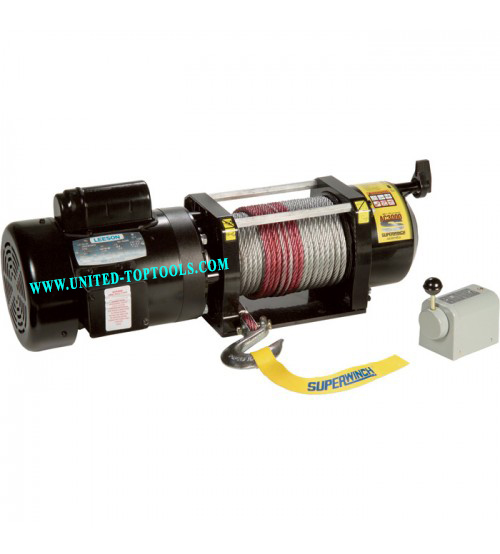 Your situation may have other “no people” zones.
Your situation may have other “no people” zones.
Begin Winching.
With the winching vehicle’s engine on and light tension already on the wire rope, begin winching slowly and steadily. Be sure that the wire rope is winding evenly and tightly around the spooling drum. For additional assistance, the winched vehicle can be slowly driven
For Vehicle RecoveryContinue pulling until the vehicle is on stable ground. If you are able to drive the vehicle, the winching operation is complete
Secure Vehicle
Once recovery of the vehicle is complete, be sure to secure the vehicle’s brakes and put the Transmission in “park” (automatic) or “low” gear for (manual) transmissions. Release tension in the wire rope
What to look for under load
The wire rope must always spool onto the drum as indicated by the drum rotation decal on the winch. As you power in, make sure the wire rope winds evenly and tightly on the drum. This prevents the outer wire wraps from drawing into the inner wraps, binding and damaging the wire rope. Avoid shock loads by using the control switch intermittently to take up wire rope slack. Shock loads can momentarily far exceed the winch and wire rope ratings. During side pulls the wire rope tends to stack up at one end of the drum. This stack can become large enough to cause serious damage to the winch. So, line up pulls as straight ahead as possible and stop winching if the wire rope comes close to the tie rods or mounting plate. To fix an uneven stack, spool out that section of the rope and reposition it to the opposite end of the drum which will free up space for continued winching.
This prevents the outer wire wraps from drawing into the inner wraps, binding and damaging the wire rope. Avoid shock loads by using the control switch intermittently to take up wire rope slack. Shock loads can momentarily far exceed the winch and wire rope ratings. During side pulls the wire rope tends to stack up at one end of the drum. This stack can become large enough to cause serious damage to the winch. So, line up pulls as straight ahead as possible and stop winching if the wire rope comes close to the tie rods or mounting plate. To fix an uneven stack, spool out that section of the rope and reposition it to the opposite end of the drum which will free up space for continued winching.
In some situations, recovery could involve two people. One drives and controls the winch, while the other provides navigation instructions and ensures the wire rope is winding properly. You and your helper must established clear and precise hand signals and review so everyone clearly understands.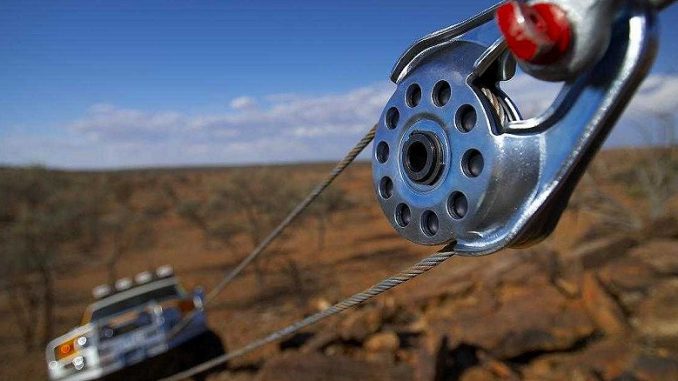 It should also be understood that if the driver controlling the winch cannot see both hands of the assistant, the winch should not be activated. Suggested signals:
It should also be understood that if the driver controlling the winch cannot see both hands of the assistant, the winch should not be activated. Suggested signals:
Arrange the remote control lead so it can not be caught in the winch. Arrange the wire rope so it will not kink or tangle when spooled. Be sure any wire rope already on the spooling drum is wound tightly and evenly layered. Tighten and straighten the layer if necessary. Keep the wire rope under light tension and spool the wire rope back onto the winch drum in even layers. Stop frequently to tighten and straighten the layers as necessary. Repeat this process until the winch hook is the same distance as the full length of the remote control from the winch. Pinch the hook between your thumb and forefinger and attach the hook strap. Hold the hook strap between the thumb and forefinger to keep tension on the wire rope. Walk the wire rope towards the fairlead, carefully spooling in the remaining wire rope by pulsing the remote control switch. Store the hook at the fairlead or tensioned to a suitable location to the side.
Store the hook at the fairlead or tensioned to a suitable location to the side.
If you do not have the hook strap, use a length of cord or something similar. To prevent serious injury, NEVER put your fingers inside the hook area as you are powering in.
Disconnect Wire Rope
Disconnect from the anchor.
Rewind Wire Rope
The person handling the wire rope should walk the rope in and not let it slide through the hand and control the winch at all times.
Disconnect Remote Control
Disconnect the remote control cord from the control box and store in a clean and dry place. Winching operations are now complete. Put the cap on the solenoid plug in.
Rigging Techniques
Various winching situations will require application of other winching techniques. These could range from too little distance to achieve maximum pull using straight line rigging, simply increasing pulling power, or maintaining a straight-line pulling situation. You will have to assess what technique is correct for your situation. Think “safety” at all times.
You will have to assess what technique is correct for your situation. Think “safety” at all times.
How to change the pulling direction
All winching operations should have a straight line from the winch to the object being pulled. This minimizes the wire rope collecting on one side of the drum affecting pulling efficiency and damaging wire rope. A snatch block, secured to a point directly in front of the vehicle, will enable you to change your pulling direction while still allowing the wire rope to be at 90º to wind properly onto the spooling drum.
Increasing pulling power
In some cases, you may find yourself needing more pulling power. The use of snatch blocks increases mechanical advantage and that increases your pulling power:
Double line
Because pulling power decreases with the number of layers of wire rope on the winch drum, you can use a snatch block to double line out more wire rope. This decreases the number of layers of wire rope on the drum, and increases pulling power.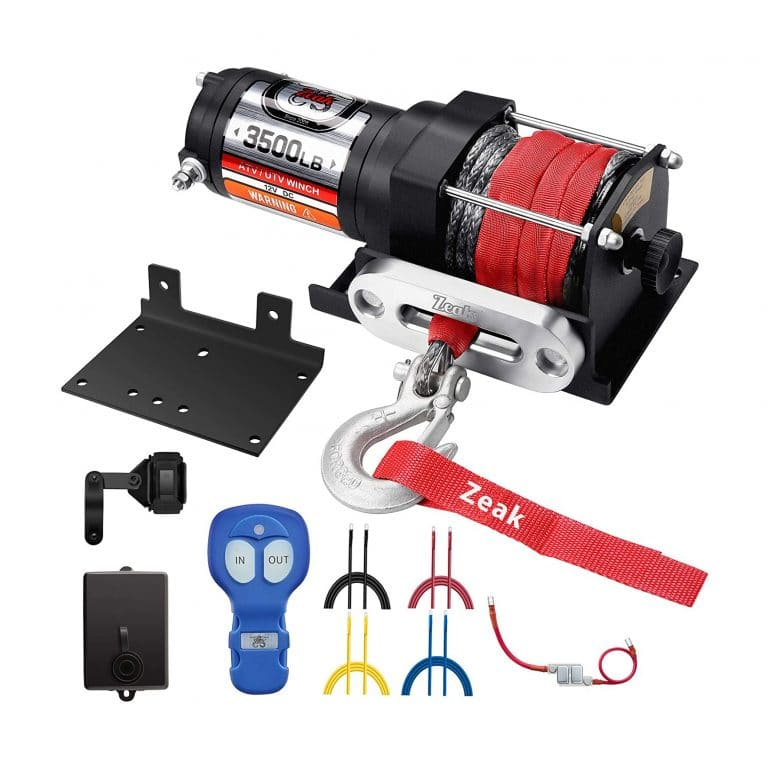 Start by feeding out enough wire rope to free the winch hook. Attach the hook to your vehicle’s frame/tow hook and run the wire rope through a snatch block.
Start by feeding out enough wire rope to free the winch hook. Attach the hook to your vehicle’s frame/tow hook and run the wire rope through a snatch block.
Disengage the clutch and, using the snatch block, pull out enough wire to reach your anchor point. Do not attach hook to mounting kit. Secure to the anchor point with a tree trunk protector or choker chain. Attach the clevis/shackle. Attach the shackle to the two ends of the strap/chain, being careful not to over tighten (tighten and back-off 1/2 turn).
Triple Line
Use the same techniques as the Double Line. Select a robust mounting location on your vehicle for the snatch block and the screw-pin shackle. Keep a 90º angle between the winch and run the wire rope to the first anchor-point and through the snatch block. Secure rope back to the vehicle. Put the wire rope through the snatch block and secure with the screw-pin shackle on the vehicle as close to the winch as practical. Now run the wire rope to the final anchor point Secure to the anchor point with a tree trunk protector or choker chain.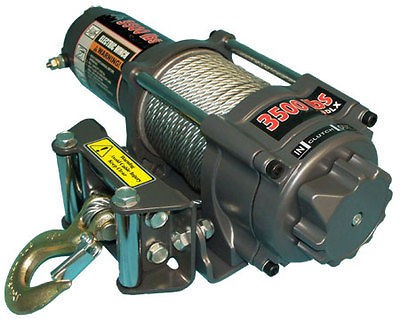 Attach the clevis/shackle. Attach the shackle to the two ends of the strap/chain, being careful not to over tighten (tighten and back-off 1/2 turn).
Attach the clevis/shackle. Attach the shackle to the two ends of the strap/chain, being careful not to over tighten (tighten and back-off 1/2 turn).
Secure the winch hook. While keeping the line near the ground, insert the winch hook through the screw-pin shackle. Check your anchor. Make sure all connections are secured and free of debris before continuing with the winching procedure.
Maintenance
The basic guide to proper winching techniques cannot cover all the possible situations in which you may need to use a winch. In the final analysis, the decisions you make will determine the final outcome. So think through each situation and each step of use. Always be mindful of your own safety and the safety of others. Pay attention and you’ll have fun.
Pay attention and you’ll have fun.
By Yaacov Steinhauer 0 comment
I never thought that uprooting stumps is such a difficult thing. Here you can not do without male power or without a special mechanism, a machine. Today I will tell you how relatively easy it is to uproot a stump with a winch. This device greatly facilitates uprooting and allows you to remove a medium-sized stump without other mechanisms or machines. So, how to uproot a stump mechanically, without the use of chemicals?
Content of article
Stump uprooting is similar to removing a molar tooth with large branched roots.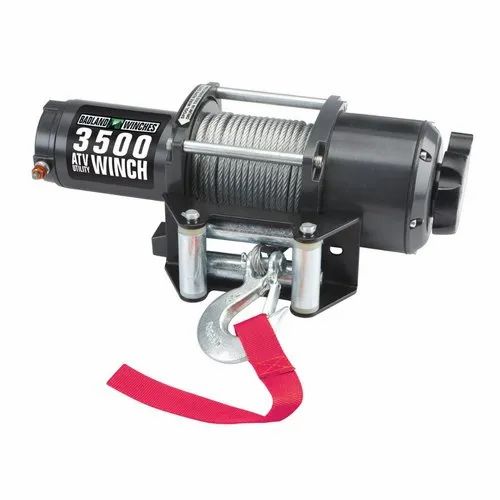 Often the depth of the tree roots reaches ten meters, the roots themselves diverge in different directions. The size of the root system of a tree is comparable to its crown. This makes it possible to imagine the "depth" of the task and evaluate the efforts to pull out the roots. Is it possible to somehow make life easier for yourself and simplify uprooting?
Often the depth of the tree roots reaches ten meters, the roots themselves diverge in different directions. The size of the root system of a tree is comparable to its crown. This makes it possible to imagine the "depth" of the task and evaluate the efforts to pull out the roots. Is it possible to somehow make life easier for yourself and simplify uprooting?
Before carrying out work, it is worth assessing the size of the stump and roots in the soil. If the tree was large and old, if the size of the stump after sawing it off exceeds
50 cm in diameter, you should first turn to chemical reagents, for example, potassium nitrate. It will be difficult to remove such a stump immediately, even with a crane. It is easier to leave it for 3-5 months by drilling holes and filling them with reagent. And after six months, it is relatively easy to remove rotten wood.
Uprooting the stump mechanically is worth it if its dimensions do not exceed 30-40 cm. In this case, you can use the draft force of the car, or a tensioning device - a winch.
In this case, you can use the draft force of the car, or a tensioning device - a winch.
Note: it is better to uproot the stump with a winch, because when pulling the stump with a cable attached to the towbar of the car, a sharp “fly-off” of the stump from the ground is possible, followed by its fall into the rear window of the car.
So, if you have a relatively small stump (in diameter) and you need to remove it as quickly as possible, proceed to mechanical uprooting with a manual lever winch. This mechanism is a steel lever, the data sheet of which indicates the maximum force that it can withstand. As a tool for uprooting sawn trees, 4-ton winches have proven themselves well. For relatively small stumps, a 1 ton winch can be used.
The rope is pulled by the winch using a winding drum. The rotation of the drum is carried out by a lever. To prevent the cable from unwinding, locking teeth are provided.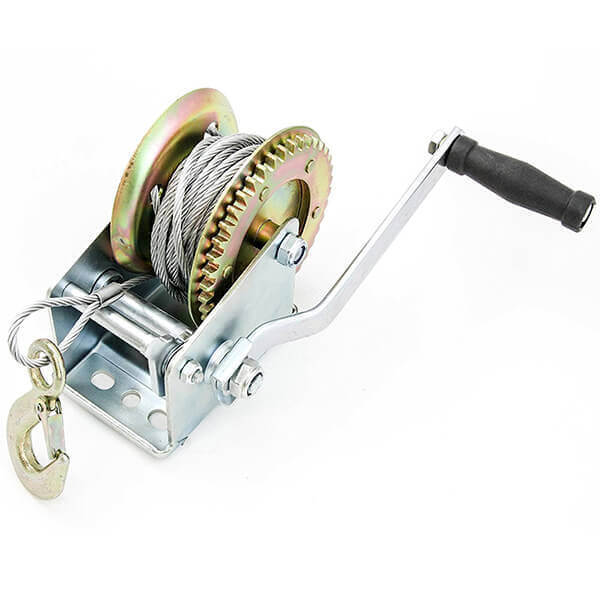
In order to remove the stump from the ground, it is necessary to cut off part of the roots that go into the ground. Be sure to cut off large roots. Thin roots are not so strong and can break off with further pulling of the stump.
However, to make work easier, it is better to cut off all lateral roots, both thick and thin. To do this, you must first expose them - dig a felled tree around the perimeter. And then - chop with an ax.
The actual uprooting of stumps starts with digging. Usually the depth of the pit during digging does not exceed half a meter. It is difficult to get deeper roots in preparation for uprooting. They can be chopped off later - in the process of pulling the hemp.
Digging the stump with an ordinary shovel, exposing the thick roots completely. This makes it possible to further chop them with an ax.
What else to consider? Digging and uprooting felled trees is easier from moist soil.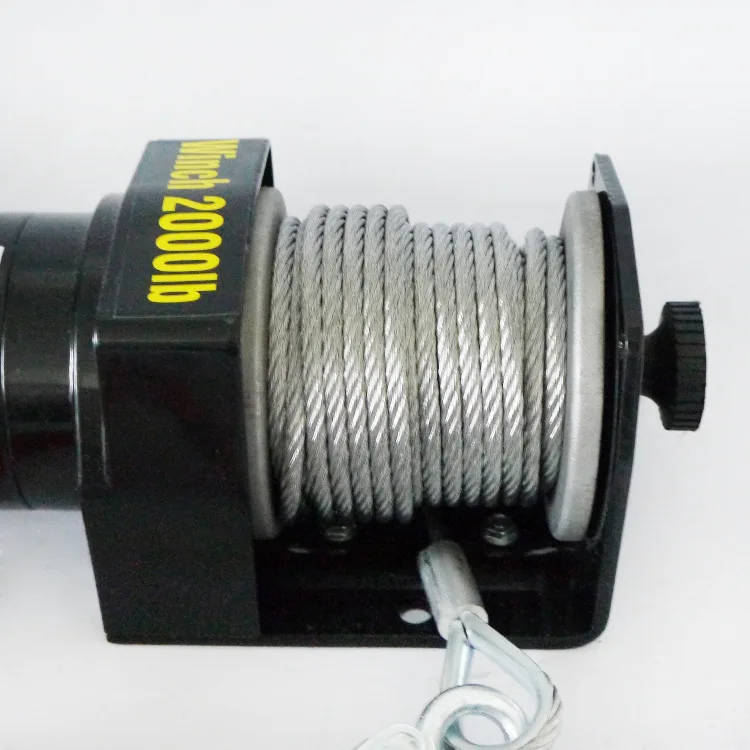 Therefore, the most suitable time is after heavy autumn rains. If the autumn is dry, it is necessary to shed the space around the tree well, having previously dug a hole around the trunk 20-30 cm deep and up to half a meter wide. Pour water into this hole and leave overnight. In 6-8 hours, it will be absorbed into the soil and make it more loose and pliable. It is necessary to shed the soil 12-24 hours before the start of the main work.
Therefore, the most suitable time is after heavy autumn rains. If the autumn is dry, it is necessary to shed the space around the tree well, having previously dug a hole around the trunk 20-30 cm deep and up to half a meter wide. Pour water into this hole and leave overnight. In 6-8 hours, it will be absorbed into the soil and make it more loose and pliable. It is necessary to shed the soil 12-24 hours before the start of the main work.
Here you have to apply physical force and cut off the bare root branches with an ax. Keep in mind that the roots are dense wood, so chopping them is harder and more difficult than chopping a tree trunk.
A chain or cable is brought under the dug root. One end of the winch is attached to the output of the chain or cable. The second end is hooked to a cable attached to another, more powerful tree or to a metal pole, which can be a support. It must be firmly concreted into the ground. Next - they begin to pull the winch mechanism.
Next - they begin to pull the winch mechanism.
Now, when pulling the stump, you can apply two techniques:
Well, perhaps that's all. After a while, the stump will be "taken out". It remains only to level the area in the place of the uprooted tree. And saw the root taken out of the ground for firewood.
After a while, the stump will be "taken out". It remains only to level the area in the place of the uprooted tree. And saw the root taken out of the ground for firewood.
The work of uprooting stumps is physically difficult and difficult. You can cope with it without calling special equipment with the help of a lever winch. First you need to dig a stump and chop off its side branches. Then - pull the cable, and pull the stump with a winch.
Liked the article? Share it:
If several decades ago a winch was installed mainly on special equipment operating in harsh off-road conditions, then at the moment such a device has ceased to be exotic for ordinary transport. Depending on the type of mechanism, most motorists will not find it difficult to find a winch in an auto accessories store.
This product is very popular among those who like to conquer hard off-road.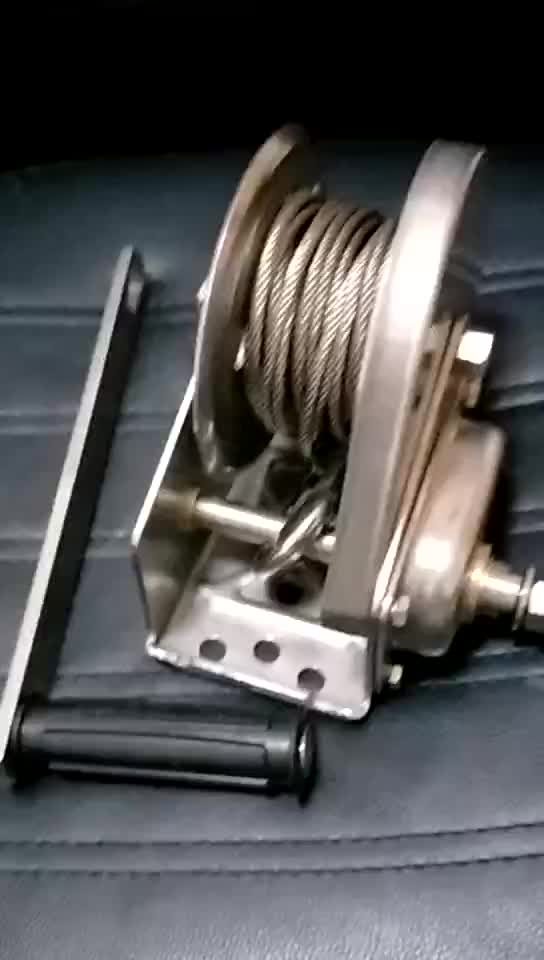 Especially often, such mechanisms can be seen on the bumper of a full-fledged SUV with high ground clearance (about what it is and how it is measured, in another review ) and all-wheel drive. For such cars, there is a key rule: the deeper into the forest, the farther to run after the tractor.
Especially often, such mechanisms can be seen on the bumper of a full-fledged SUV with high ground clearance (about what it is and how it is measured, in another review ) and all-wheel drive. For such cars, there is a key rule: the deeper into the forest, the farther to run after the tractor.
In order for the driver to get out of the situation when the car is thoroughly buried in mud or snow, and the nearest settlement is too far away, manufacturers of special mechanisms for off-road vehicles have developed a winch. Consider what a winch is, what types of winches exist for a production car, how they work, and what type is better to choose for your SUV.
If the car is used exclusively in urban areas or on a flat road, then it will never need a winch. But provided that the car will have to conquer off-road, such a design will definitely be installed on its bumper (although there are portable modifications, but more on that later).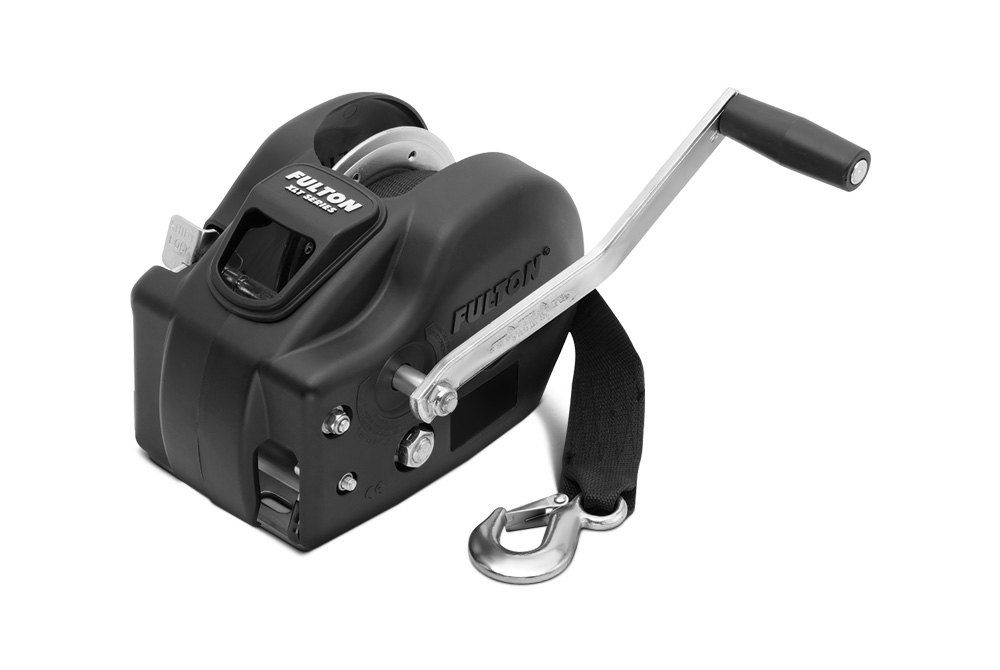
Mushroom picker, fisherman, hunter and just a fan of off-road trips will definitely get a similar car mechanism. This device is a structure that is mounted on the bumper of the car or on a fixed surface outside the car. She will definitely have a drive. It can be an electric motor or a mechanical hand drive with a shaft on which the cable is wound.
Extreme motorsport is not only circuit racing in sports cars, such as the events described by here . This category also includes races in the wilderness, for example, orienteering competitions or simply rides on maximum off-road. Such trips are always accompanied by procedures for pulling a stuck car out of a swamp.
Since off-road conquerors try their luck where no crane can reach, the winch just performs the function of a mini crane. If it is correctly selected and correctly fixed, then the driver will not be afraid to sit down in the farthest wilderness. The main thing is that the battery charge is enough, and the engine does not stall due to a large amount of dirt. But in this case, the manual option is useful.
But in this case, the manual option is useful.
The winch allows you to convert any energy (electrical, hydraulic or physical effort) into traction. This force allows you to pull out an SUV that is stuck in the mud or in a snowdrift. A classic winch allows you to hook one end of the cable to any strong immovable object (for example, a tree or a metal pipe that acts as an anchor hammered into the ground) and slowly pull the car out of the "captivity" of the off-road element.
Today, motorists are offered a large selection of winches. Each type will have its own device, but the principle of operation is the same for all of them.
The winch will consist of:
 Each of these materials has its own advantages and disadvantages, so when deciding on the type of mechanism, you need to consider what load this element must withstand.
Each of these materials has its own advantages and disadvantages, so when deciding on the type of mechanism, you need to consider what load this element must withstand.  There are portable winches that are controlled via a radio remote control or a wired analogue.
There are portable winches that are controlled via a radio remote control or a wired analogue. There are many factors to consider when choosing a new winch, the most important being its size or load capacity. Ideally, it is better to have a more powerful mechanism in the trunk of the car than the weight of the car requires. The reason is that lifting vehicles out of the mud involves overcoming additional effort. When the car is deep in the mud, it seems to be sucked in until the wheels hit a hard layer of soil.
When the vehicle is lifted or towed, mud creates additional resistance that the winch drive must overcome. For this reason, it is important that the power of the power plant or the strength of the cable can overcome this force.
Car winches differ not only in the materials from which they are made and the manufacturing company. Particular attention should be paid to the drive, since each of the varieties has its own advantages, but is not without significant drawbacks.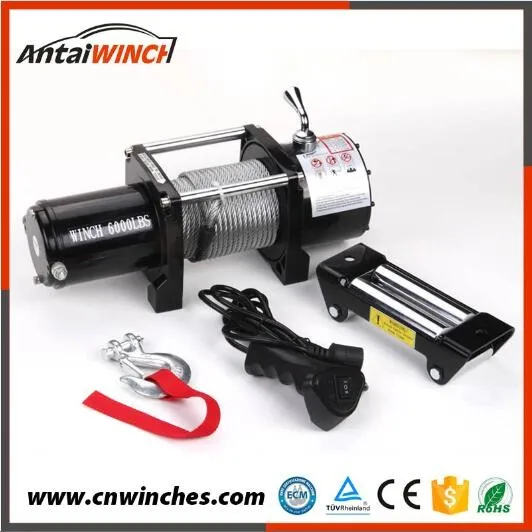
In the list of car accessories that can pull the vehicle out of the bog are:
Let's consider each of these types separately.
This is probably the most common type of car winch. The reason is that manual modifications are the cheapest, and they do not use the resources of the car itself. To pull the car out of the mud, the driver does not need to connect to either the battery or the power unit.
To do this, it is enough to fasten the cable on one side to a fixed vertical surface, and on the other hand hook it to the corresponding hooks in the bumper. Then, using a ratchet mechanism, the motorist pulls the cable, gradually pulling out his car.
Although such a device can help you get out of the trap of off-road, in difficult situations it is almost useless. This is especially true if the car is heavy. The smaller the mass of the transport, the easier it will be to pull it out, since this requires a lot of physical strength.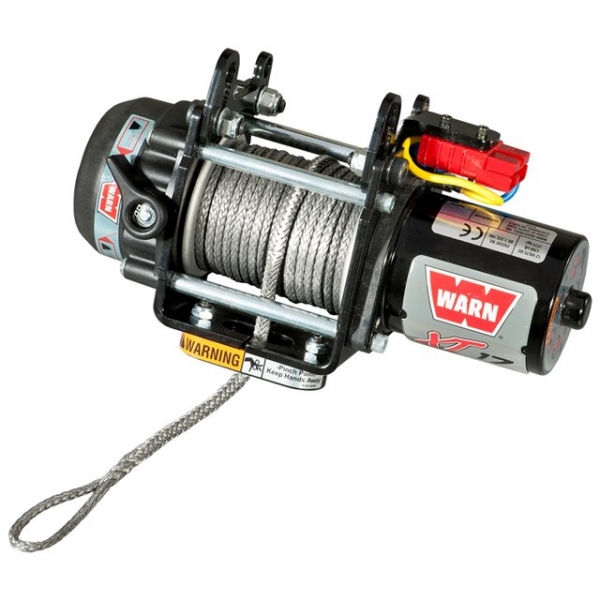 So, if the car weighs no more than one ton, then this type of tug will be useful. Otherwise, the vehicle may remain stationary.
So, if the car weighs no more than one ton, then this type of tug will be useful. Otherwise, the vehicle may remain stationary.
The next type of car winch is mechanical. It uses the resource of the engine of the car itself. Such a mechanism does not have its own drive. It is rarely seen on SUVs for one simple reason. To use the tug, you need to connect it directly to the car's engine.
There are few models that make it possible to connect such devices. Often they are already equipped with a winch from the factory, and buying a new one may be associated with a breakdown of the factory version. For this reason, it is rare to find mechanical types of winches in stores.
This is the most expensive type of towing device. The reason is that they provide the smoothest and quietest operation, but they also have the most complex device. They are also suitable for heavy vehicles that have fallen into a difficult trap, but electric options can also successfully cope with this task. Repairing such a device will cost a fortune, so in stores such a modification is also very rare, like a mechanical version.
Repairing such a device will cost a fortune, so in stores such a modification is also very rare, like a mechanical version.
As you can see, the advantage of hydraulic winches is their quietness and smoothness. However, this is more about convenience than greater efficiency, so such devices are bought only by those motorists who want to emphasize the status of their car and demonstrate their material capabilities.
The main difference between the hydraulic winch and the electric version is in the drive. Such an installation is connected to the power steering. In this case, the device cannot be used if the vehicle engine is turned off.
Electric winch is the most common and popular type of tractor. It is equipped with its own electric motor, which will be powered by a car battery (the wiring is connected either directly to the car's electrical circuit on a permanent basis, or through the cigarette lighter socket). To prevent the device from draining the battery in a couple of minutes, a traction battery must be installed in the car.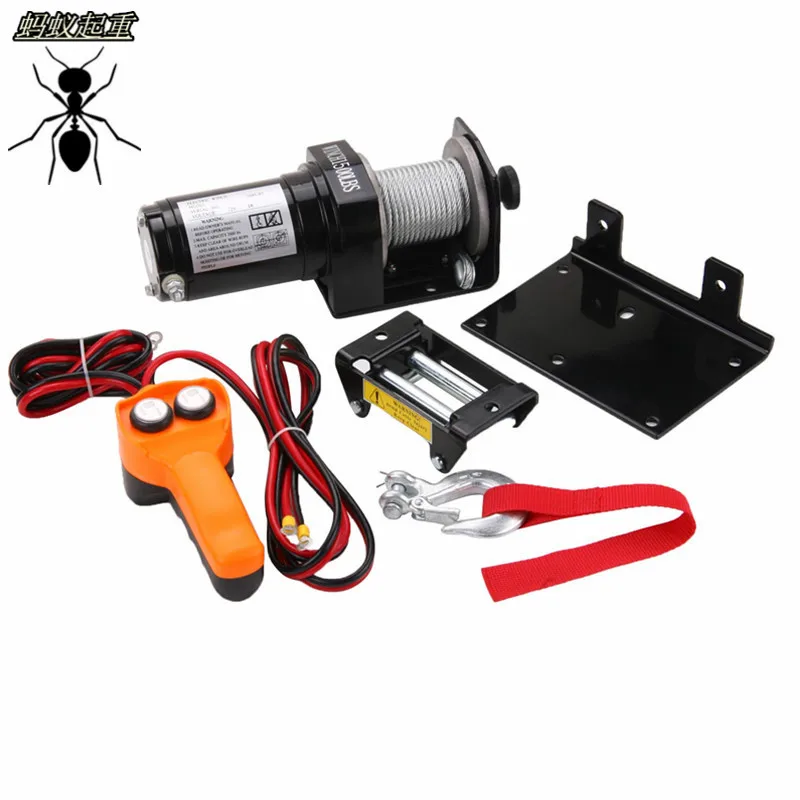 The difference between the starting and traction option is described in another article .
The difference between the starting and traction option is described in another article .
The auto accessories market offers a wide range of electrical modifications. They have different power and a slightly modified design. Such a winch can be installed on the bumper of a car on a permanent basis or hidden in the trunk and used only when the situation requires it. Electric tugs have more traction than manual counterparts and, despite the noise during operation, they cope with their task no worse than hydraulic models. The main thing is to choose the right device.
If the car has stalled and can no longer fight the dirt, the electric winch makes it possible to pull the car to a more suitable place for repair. This option (autonomous battery operation) distinguishes this modification from other types of tugs.
Installation of electric winches can even be carried out hidden (hidden behind the bumper or under the body panel of the machine). The main thing is that the design of the car or its bumper allows you to hide the device so that it does not spoil the design of the vehicle.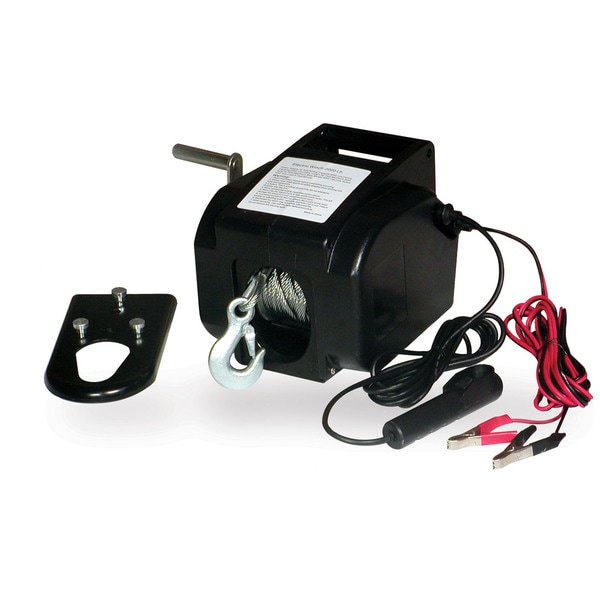
Here is a small table, which will help determine the electric lane model and its power:
| Type force | The winch weight | for which transport is |
| 2.0-2.5 thousand pounds | 9Snowmobiles and oversized ATVs, light vehicle provided the vehicle is not too low | |
| 4.0-4.5 thousand pounds | 17-25 kg | Heavy snowmobiles and ATVs, passenger car, small SUV or mid-range SUV0212 |
| 6.0-6.5k pounds | 18-30kg | Compact SUV, mid-size SUV. If the device is purchased for a heavy crossover and a larger SUV, then experts recommend using the amplification unit. |
| 9.0-9.5k pounds | 40kg or more | These models will stretch any SUV. |
So, the winch is different. In addition to different designs and build quality, the devices have different power. Consider what parameters should be used to select a new winch.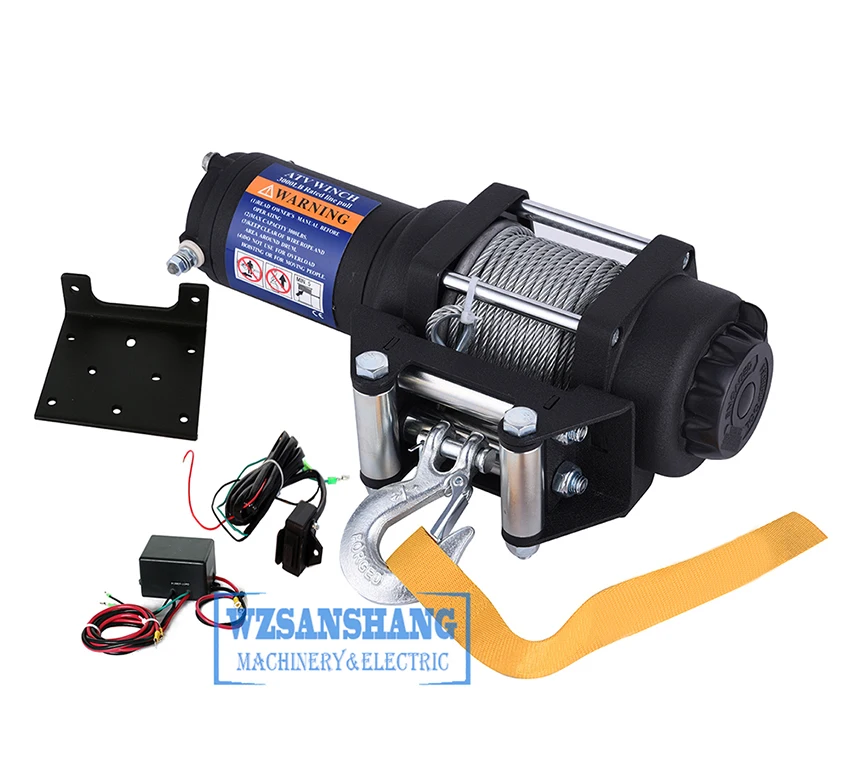
The key parameter is tractive force. In most modifications, this indicator is determined by pounds (in one pound 0.45 kg.). The winch pull is several thousand pounds, and many models are indicated in the form of markings, for example, 4.7, which means the ability to pull a weight of 4700 pounds or 2115 kilograms (4700 * 0.45).
The second parameter is the dimensions of the winch. Naturally, when the car sits in a puddle, everyone wants the winch to be able to overcome the maximum load. But the more powerful the device, the larger the motor and the more massive the design. Not only does this design take up a lot of space, it also has a decent weight. Not every motorist is ready to constantly carry an additional 50 kilograms with him.
To determine how much power the winch should be, you need to make the following calculations. The minimum tractive force rating should be one and a half times the weight of the vehicle (ideally, 2.5 times). But at the same time, you need to take into account the maximum weight of the car (including the weight of passengers and cargo, so that you do not have to unload a stuck car). If there is any doubt about whether the power of the tug is suitable for a car, it is better to choose an option with a margin.
If there is any doubt about whether the power of the tug is suitable for a car, it is better to choose an option with a margin.
Thirdly, you need to choose a new tug also according to the type of cable. All devices operate mainly on two types of ropes:
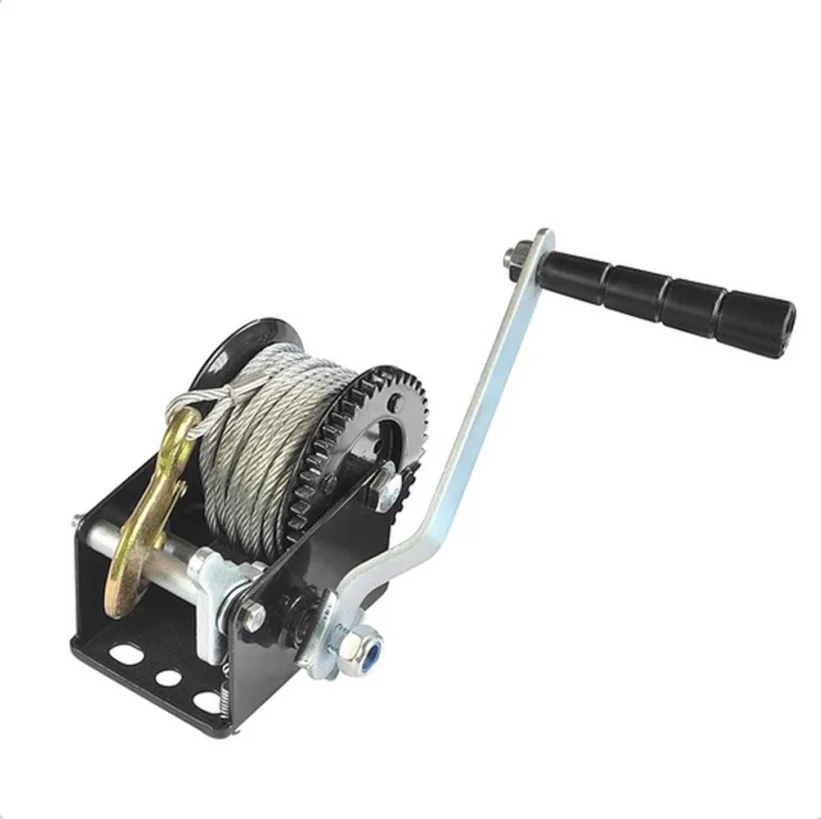 The reason is that this material is resistant to abrasion, and it does not rub against stones while the car is being towed. An important condition during the use of such a winch is tight gloves. A broken cable strand is not easy to see, but the lack of protection can cause serious hand injury to the driver, especially when manually unwinding the cable.
The reason is that this material is resistant to abrasion, and it does not rub against stones while the car is being towed. An important condition during the use of such a winch is tight gloves. A broken cable strand is not easy to see, but the lack of protection can cause serious hand injury to the driver, especially when manually unwinding the cable. 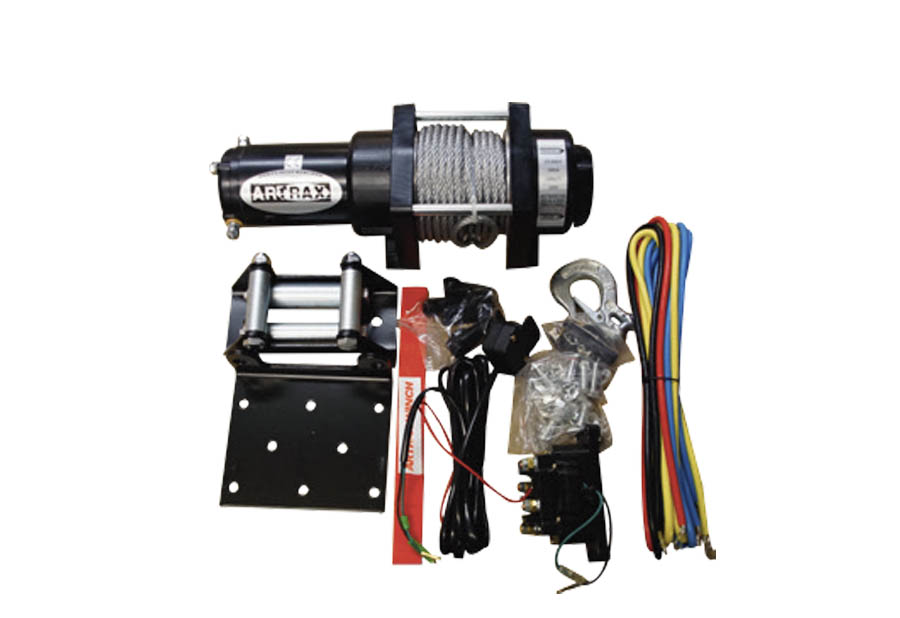 After use, it is important to dry the cable so that it does not deteriorate when it is wound on the drum.
After use, it is important to dry the cable so that it does not deteriorate when it is wound on the drum. The fourth parameter to be guided by is the device mounting method. As already mentioned, winches are hidden, mounted and portable. In each individual car, a certain modification can be used, for example, in some car models it is not possible to hide the tug behind the bumper or body panel.
If the winch is to be permanently fitted to the bumper, then most types of factory bumpers will require some modifications to the vehicle's power section as well. Most often, a motorist has to use the services of a welder.
Fifth. Despite the shortcomings of the nylon cable, most experts recommend using it. So that it does not jump off the drum when fully unwound, a special bracket is installed in the winch, through which the tug is passed and then tightened with a loop around the shaft.
If there is no experience in mounting a winch on a car, it is better to install it under the supervision of a specialist or use the services of a service station. If installed incorrectly, the mechanism can either break off the mount or tear off the power section from the machine. Such damage cannot be repaired in off-road conditions, and if you hook the cable to the supporting part of the machine, you can cause irreparable damage to it.
If installed incorrectly, the mechanism can either break off the mount or tear off the power section from the machine. Such damage cannot be repaired in off-road conditions, and if you hook the cable to the supporting part of the machine, you can cause irreparable damage to it.
You can find a new winch at any major car accessories store. There are also specialized auto-tuning centers where you can not only pick up a tug, but also ask for a recommendation from a master who specializes in installing such devices.
The design is not selected according to the VIN code (what it is and where it is located on the car body, read here ), except for those situations when the "tractor" is included in the factory package, and there is a desire to install the original mechanism. In other cases, the driver independently selects the device according to its power, design and method of attachment to the body.
Another way is to use the services of online stores. There are Chinese platforms like Aliexpress that offer good budget options, but this option is more suitable for specialists who know exactly what to look for. Otherwise, it is better to use the services of physical outlets.
There are Chinese platforms like Aliexpress that offer good budget options, but this option is more suitable for specialists who know exactly what to look for. Otherwise, it is better to use the services of physical outlets.
Good models can be found among the products of such manufacturers:
The last one is an English manufacturer, the rest are US companies.
Here is a little guide for first time users.
Personal safety must be taken care of first. Especially if a steel cable is wound on the drum. It is better not to use ordinary cheap construction gloves in this case. They are not so dense, and will not be able to protect against injuries, since the cores of the cable are thin. It is better to purchase thick suede gloves.
Next, you need to find a fulcrum that will act as an anchor. This could be a huge rock, another vehicle, a tree, or a stake driven into the ground on level ground.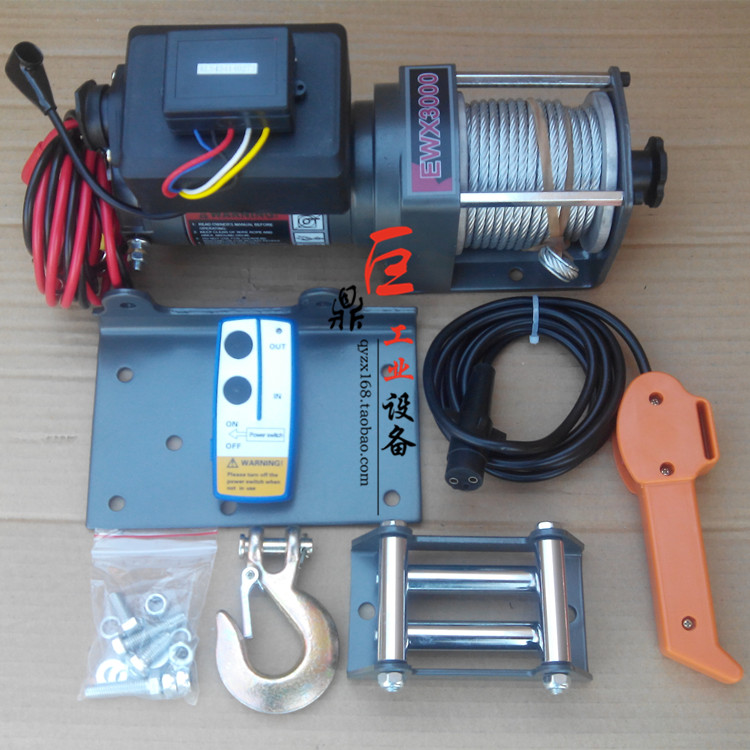
Unwind the rope. To do this, most winches are equipped with a special lever that fixes the ratchet. If the tug is controlled via a remote control, then it must be connected. The cable must be attached to the bottom of the anchor - so there is less chance of breaking the trunk of a small tree or turning the stake out.
The winch is usually equipped with a D-loop or hook with a lock, like a conventional towing rope. We wrap the anchor with a cable and put a loop on a part of the rope coming from the car. We fix the winch drum so that it winds the cable. We pull the rope.
Before proceeding with the manipulation, it must be ensured that no one will be harmed in the event of a cable break. It is important that all observers and passengers move to a safe distance. In most cases, the driver needs to get behind the wheel and turn on the winch.
It will gradually tighten the car. As soon as the machine reaches a more or less stable surface, and can continue to move independently, turn off the winch. It is best to continue towing until the machine has traveled some distance on hard ground.
It is best to continue towing until the machine has traveled some distance on hard ground.
The tug structure is dismantled in reverse order. First, we release the drum to eliminate tension in the cable. Next, release the latch (D-shaped loop or hook). We wind the cable on the drum and turn off the control panel. A small nuance. The steel cable must be wound so that the coils lie next to each other. As for the nylon analogue, this procedure is needed only for beauty.
In addition, we offer a short video on the layout of winches and how to use the device to pull a car out of mud or overcome difficult climbs:
How to use the car electric winch.
Watch this video on YouTube
What types of drive do winches have? Modern winch designs use two types of drives. The cable is tensioned by means of a manual gearbox or by means of an electric motor.
What are winches used for? This is a mechanism that allows you to move the load in a vertical or horizontal direction.
